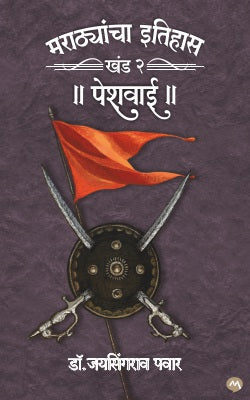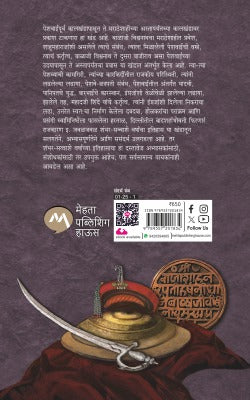MARATHYANCHA ITIHAS KHAND 2 PESHWAI
MARATHYANCHA ITIHAS KHAND 2 PESHWAI is backordered and will ship as soon as it is back in stock.
Couldn't load pickup availability
Genuine Products Guarantee
Genuine Products Guarantee
We guarantee 100% genuine products, and if proven otherwise, we will compensate you with 10 times the product's cost.
Delivery and Shipping
Delivery and Shipping
Products are generally ready for dispatch within 1 day and typically reach you in 3 to 5 days.
Book Details
-
ISBN: 9789357201834
-
Edition: 1st
-
Publishing Year: January 2025
-
Pages: 320
-
Language: Marathi
-
Category: Reference and General
-
Binding: Paperback
-
Publisher: Mehta Publishing House
About The Book
This volume takes an in-depth look at the rise and decline of the Maratha Empire, spanning from the pre-Peshwa period to the eventual downfall of the Peshwa rule. It delves into the entry of Balaji Vishwanath into the Maratha kingdom, his relationship with Shahumaharaj, and the Peshwa attire he received, marking the beginning of his journey. The book then traces the rise to power of the Peshwa empire, leading up to Bajirao II and explains the achievements and challenges faced by the Peshwas.
It explores various key events such as the political landscape during their reign, battles fought by the Peshwas, the Peshwa-Chhatrapati relations, and the internal conflicts among the Peshwas. The book also covers significant events like the Battle of Panipat, Barbhai's malicious actions, occasional battles with the British, and the treaties concluded during this period. Furthermore, it highlights the contributions of Mahadji Shinde, his conflicts with the British, and the hegemony he created in the north, along with Holkar’s prowess and how the Marathas were sometimes torn apart by self-righteousness.
The volume also touches upon the politics surrounding the Badshahs of Delhi and provides a detailed narrative of nearly 150 years of Maratha history, offering deep insights and historical context. This thorough account will be invaluable not just to scholars and researchers, but also to general readers interested in understanding the complexities of the Maratha Empire and its eventual decline.







